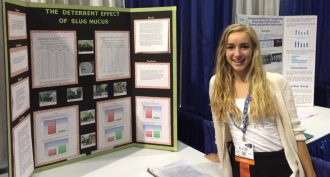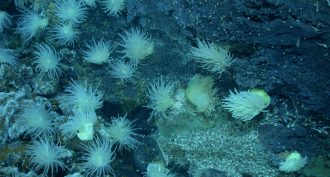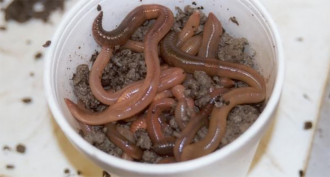HS-LS2-7
Design, evaluate, and refine a solution for reducing the impacts of human activities on the environment and biodiversity.
-

Slime: A new way to protect plants from slugs
Katie Gwaltney had a slug problem in her garden. She decided to try using the slugs’ own slime against them. Her findings earned the high school freshman a finalist’s spot at this week's Intel International Science and Engineering Fair.
-
 Animals
AnimalsWhen a species can’t stand the heat
When temperatures rise, New Zealand’s tuatara produce more males. With global warming, that could leave the ancient reptile species with too few females to avoid going extinct.
-
 Animals
AnimalsExplainer: How invasive species ratted out the tuatara
The introduction of rats to New Zealand led to huge population losses of the ancient tuatara. These uncommon reptiles vanished from the mainland. This left isolated populations to survive on several dozen isolated islands.
-
 Earth
EarthMining metals amidst seafloor animals
Miners may need to get their feet — and everything else — wet as they carefully seek out loads of copper and other valuable natural resources.
By Sid Perkins -
 Life
LifeCaught in the act
Scientists observe some evolutionary speed demons as they adapt over the course of just a few years to new environmental conditions.
-
 Climate
ClimateWatching our seas rise
Satellites, coral reefs, ancient Roman fishponds and sinking cities help us understand how humans are changing sea level.
By Douglas Fox -
 Animals
AnimalsTiny earthworms’ big impact
Invasive earthworms change North American landscapes, for better or worse.
-

-

-
 Environment
EnvironmentCleaning up fish farms
Although fish farms can supply lots of food, these operations may also cause pollution and hurt wild populations.
-
 Climate
ClimateArctic algae show climate change
Sediment from Arctic lakes shows that much of the Northern Hemisphere has been warming for many decades.
By Emily Sohn -
 Climate
ClimateA change in climate
Global warming may be wiping out some plants and animals or pushing them into new habitats.
By Emily Sohn